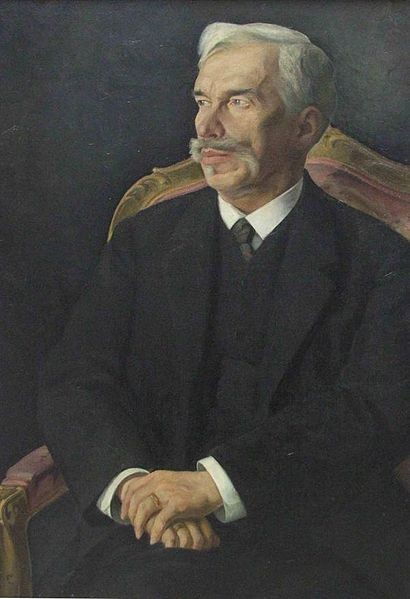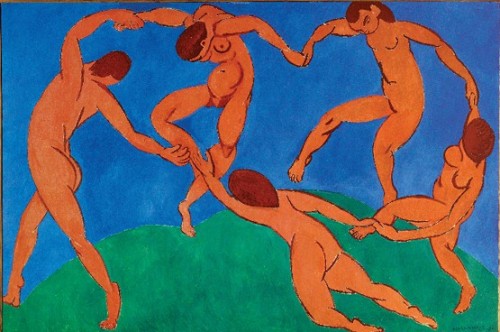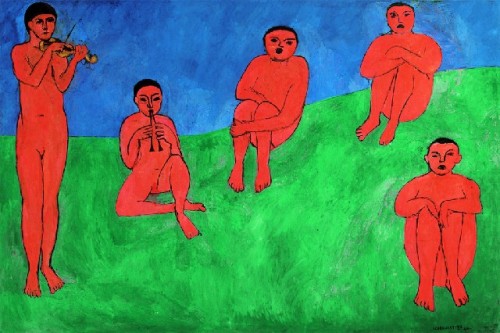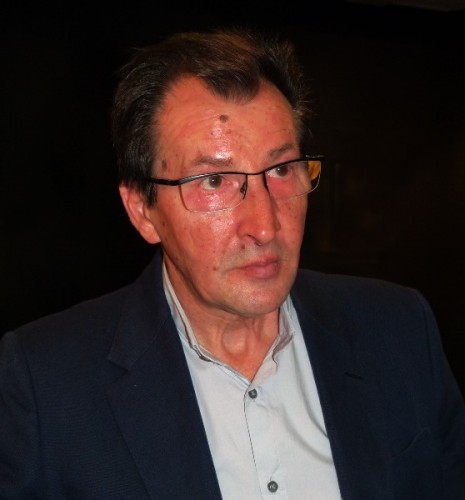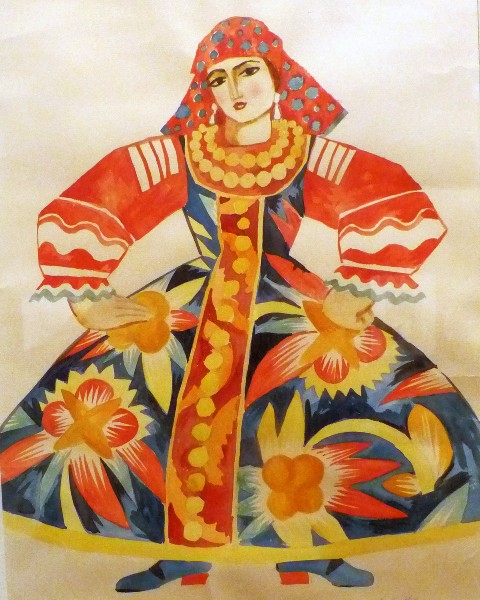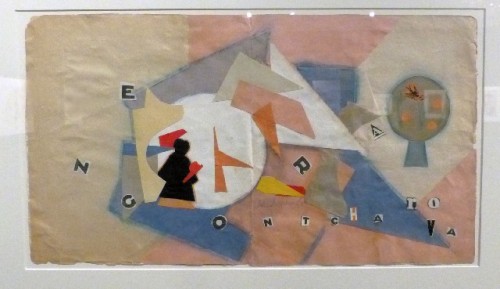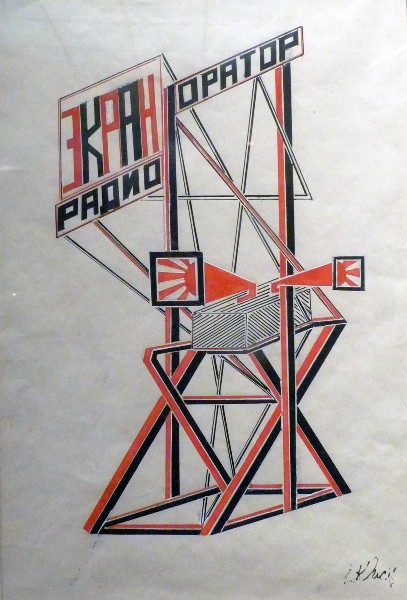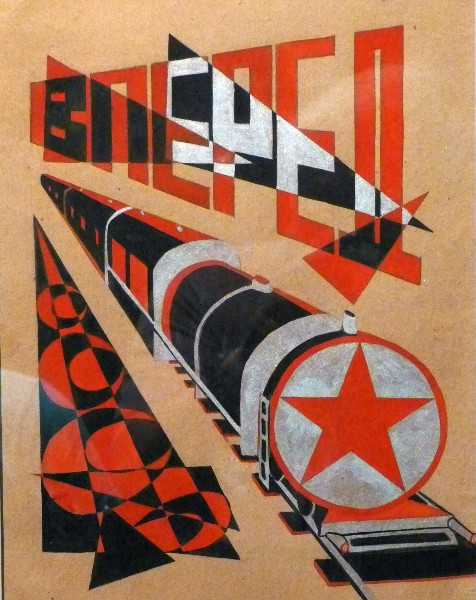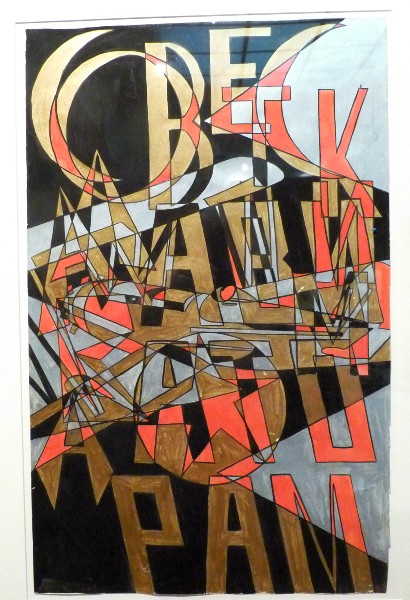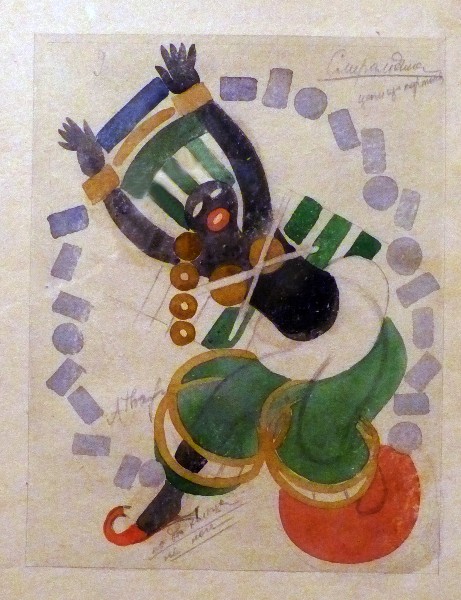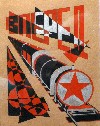From Primitivism to Propaganda: Russia’s Modern Masters
Works from Marina and Nikolay Shchukin Collection at National Arts Club
By: Charles Giuliano - May 31, 2014
In 1897 Sergei Ivanovich Schukin (1854-1936) purchased an important painting by the French impressionist Claude Monet. The wealthy Moscow businessman developed a passion for modernism eventually acquiring one of the great private collections of 258 works.
Works from the collection of a family descendant Marina and Nikolay Shchukin are currently on view at the National Arts Club in Gramercy Park through June 14. Primitivism to Propaganda: Russia’s Modern Masters with some 35 works on paper includes primarily lesser known but top notch artists. The exhibition provides a museum level thumbnail from the avant-garde and agit-prop of the Revolution through the purge and shift to social realism after the death of Lenin in 1924.
During that brief period the Russian avant-garde pervaded all aspects of culture including the fine arts, photography, architecture, design, theatre and film. Because of its complete repression under Stalin understanding of one of the major modernist movements began as late as 1981 with the Guggenheim Museum’s exhibition and extensive publication of the George Costakis collection Art of the Avant-Garde in Russia.
The display in Shchukin’s mansion, which he opened to the public on Sundays, by 1914 included thirteen Monets, three Renoirs, eight Cézannes, four Van Goghs, sixteen Gauguins of the Tahitian period, seven paintings by Henri Rousseau, sixteen Derains, and eight by Albert Marquet. Shchukin had an association with Matisse who decorated his mansion including the masterpiece La Danse. An earlier version is in the collection of MoMA. As a pendant he created Music for the collector in 1910. The collection also featured fifty works by Pablo Picasso, including most of his earliest Cubist works, such as Three Women and major landscapes, as well as key pieces of the Blue and Rose periods.
His friend and rival was Ivan Abramovitch Morozov. After the Revolution of 1917 their collections were confiscated. Initially shown separately they were merged in 1928 in the former home of Morozov. In 1948 the State Museum of New Western Art was closed by Stalin due to its allegedly bourgeois, cosmopolitan and counter-revolutionary orientation. The two collections were randomly divided between the Pushkin Museum of Fine Arts and the State Hermitage Museum in St. Petersburg.
Curators literally risked their lives to hide and preserve condemned works. Artists were purged and their works hidden in barns and attics. The Soviet Union placed no value on this cultural legacy.
Stationed in Moscow as a diplomat George Costakis (1913-1990) stumbled upon constructivist paintings by Olga Rozanova. After the war he met Vladimir Tatlin and befriended Varvara Stepanova. He tracked down friends of Kasimir Malevich and bought works by Liubov Popova and Ivan Kliun. He particularly admired Anatoly Zverev a Russian expressionist whom he met in the 1950s. By word of mouth he found lost works with then little or no market value.
By the 1960s his Moscow apartment became Russia’s de facto Museum of Modern Art. In 1977 he retired and moved to Greece. By negotiation with the Russian government 50 percent of the collection went to the Tretyakov Gallery of Moscow. Many museums courted the Costakis collection but in 1997 the Greek State bought the remaining 1275 works. They are now a part of the permanent collection of the State Museum of Contemporary Art, in Thessaloniki, Greece. It is the most extensive collection of the Russian avant-garde outside of the former Soviet Union.
Through an interpreter during the press opening at the National Arts Club I asked Nikolay Shchukin if he had seen the Costakis collection in Greece? Somewhat surprised he replied that he knew the collector well in Moscow.
Knowing that the Shchukin collection had been confiscated I asked if any of the works on view had come down through his family? The answer wasn’t clear. I asked how he had acquired them and the response was a vague suggestion of numerous sources. It appears that Nikolay, a former psychoanalyst, commutes to several properties in Russia, France and the United States where he operates art galleries. The gallery represents contemporary as well as modernist Russian art.
Even through an interpreter I evoked a sharp response and ironic laugh when conveying the story that his relative was appointed the “curator” of his home and collection by Soviet authorities. He denied, however, that the collection had been confiscated in 1917. Surprisingly he insisted that he had “donated” it in 1914 under the then Czarist government. Deprived of the collection he emigrated to Paris where he died.
After touring the fascinating works on view I asked the curator Matthew Drutt if the exhibition will travel? Apparently not. It has been entirely paid for by Marina Kovalyov and her daughter Rina Kirshner’s Russian American Foundation as a part of the Annual Russian Heritage Month.
“It has come here because the opportunity arose and we asked for it” Drutt explained. During opening remarks he commented that it had come about rather quickly. Is any of the work for sale? “Some” he said adding that “many of these works have never been seen in the United States.”
Looking about we encountered works by the artists Natalia Goncharova, Mikhail Larionov, Rosalia Rabinovich, the Stenberg brothers, Nikolai Suetin, Alexandra Exter, Pavel Tchelitchew and Gustav Klutsis.
Not surprisingly there were costume designs for the ballet by Larionov, Erte, Exter and Goncharova. “It’s how they made a living” he commented.
I asked why there was no work by Leon Bakst the most famous of the many costume designers for ballets by Diaghilev?
“Mr. Shchukin does not drop his hook into well fished waters” the curator responded. Works by the best known artists from Kandinsky and Malevich to Bakst are now rare and costly. There are less trolled ponds with more affordable works by lesser known artists.
In particularly I was interested in some superb drawings/ designs by Klutsis a master of agit-prop. Referring to works in MoMA I commented that this important artist is not well known. “The works on view here are better than the ones in MoMA” Drutt said. “There are now a couple of monographs on Klutsis in English.”
With the emergence of the Russian oligarchy the market for this work and scholarly interest has soared. Although the Stalin-like actions of Vladimir Putin have had an uncalculated negative impact.
It is interesting that this exhibition of early 20th century modernism is on view in New York simultaneously with Futurism at the Guggenheim and Degenerate Art at the Neue Galerie.
My dialogue with Drutt was interrupted by a woman of the press who asked “Why do so many works here remind me of Kandinsky?”
I didn’t hang around for the answer.

